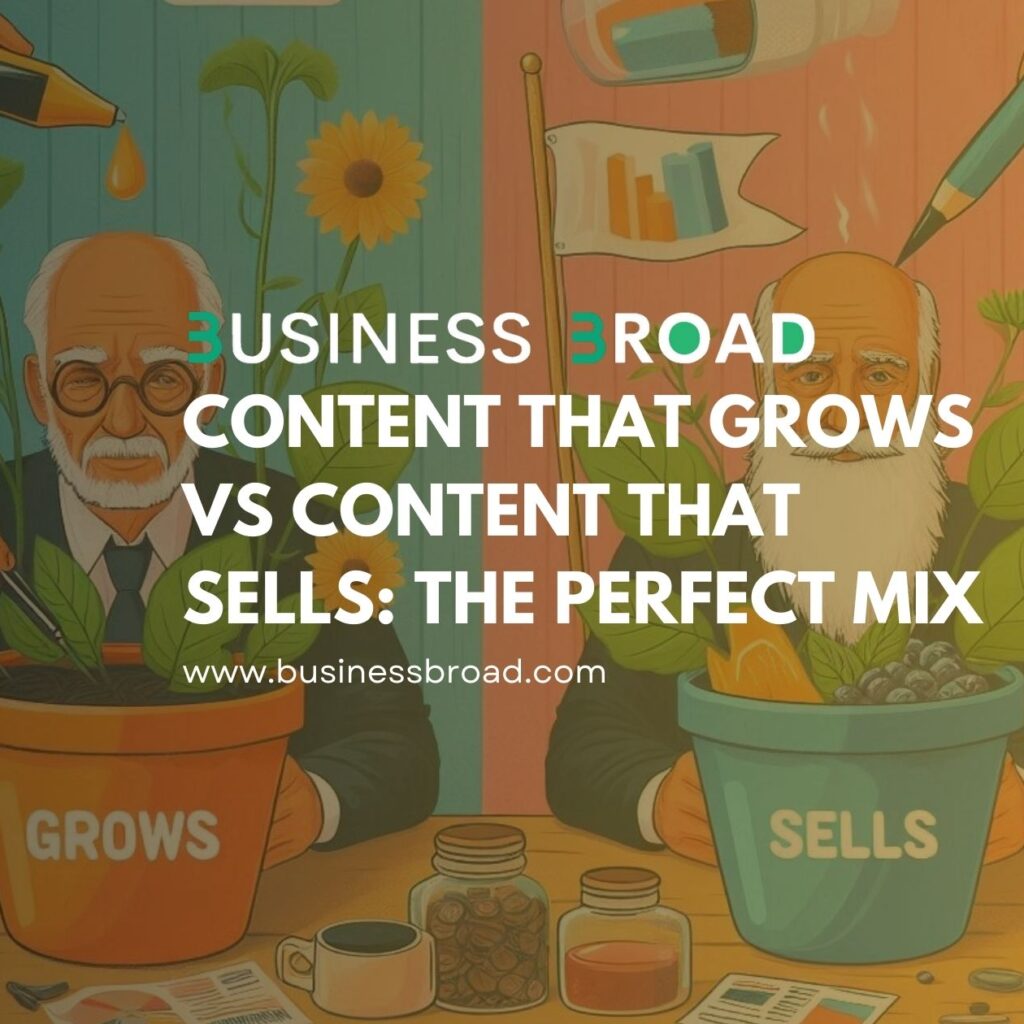In the digital marketing landscape, content plays a crucial role in achieving business goals. However, not all content is created equal. Some content is designed to grow your audience and build brand awareness, while other content is focused on driving sales and conversions. Striking the perfect balance between content that grows and content that sells is key to a successful content marketing strategy. Here’s how to achieve that perfect mix:

Understanding Content That Grows
Content that grows is aimed at attracting and engaging a broad audience. Its primary goal is to increase brand visibility, establish authority, and build trust with your target market. This type of content is usually informative, educational, and entertaining.
Characteristics of Content That Grows:
- Educational: Provides valuable information and insights that help the audience solve problems or learn something new.
- Engaging: Captivates the audience’s interest with compelling storytelling, visuals, and interactive elements.
- Shareable: Encourages social sharing and word-of-mouth promotion, expanding your reach.
- SEO-Optimized: Utilizes relevant keywords and SEO best practices to rank higher in search engine results.
Examples:
- Blog posts
- Infographics
- How-to guides
- Industry reports
- Educational videos
Understanding Content That Sells
Content that sells is designed to convert leads into customers. Its primary focus is on driving actions such as purchases, sign-ups, or inquiries. This type of content is persuasive, direct, and focused on showcasing the benefits of your products or services.
Characteristics of Content That Sells:
- Persuasive: Uses compelling language and strong calls-to-action (CTAs) to encourage conversions.
- Benefit-Oriented: Highlights the unique selling points (USPs) and advantages of your offerings.
- Customer-Centric: Addresses the specific pain points and needs of your target audience.
- Time-Sensitive: Often includes time-limited offers, discounts, or promotions to create a sense of urgency.
Examples:
- Product descriptions
- Landing pages
- Case studies
- Email campaigns
- Sales videos
Finding the Perfect Mix
Creating a content marketing strategy that balances content that grows with content that sells is essential for long-term success. Here are some strategies to achieve the perfect mix:
1. Align Content with the Buyer’s Journey
Map out the buyer’s journey and create content that addresses each stage—awareness, consideration, and decision. Use content that grows to attract and educate potential customers in the awareness stage, and content that sells to convert them in the decision stage.
2. Use a Content Calendar
Plan your content in advance with a content calendar. This helps you maintain a balance between educational and promotional content. Ensure that your content calendar includes a mix of blog posts, social media updates, email campaigns, and sales promotions.
3. Repurpose Content
Repurpose your existing content to serve different purposes. For example, turn a high-performing blog post into an infographic, a video, or a series of social media posts. This allows you to maximize the value of your content and reach different audience segments.
4. Measure and Adjust
Regularly measure the performance of your content using analytics tools. Track metrics such as website traffic, engagement, conversion rates, and ROI. Use this data to adjust your content strategy and find the right balance between content that grows and content that sells.
5. Incorporate User-Generated Content
Leverage user-generated content (UGC) to build trust and authenticity. Encourage your customers to share their experiences and reviews. UGC not only enhances your brand credibility but also serves as persuasive content that can drive sales.
Conclusion
Achieving the perfect mix between content that grows and content that sells is crucial for a successful content marketing strategy. By understanding the characteristics of each type of content and implementing strategies to balance them, you can attract a larger audience, build trust, and drive conversions. Remember to align your content with the buyer’s journey, use a content calendar, repurpose content, measure performance, and incorporate user-generated content for optimal results.




